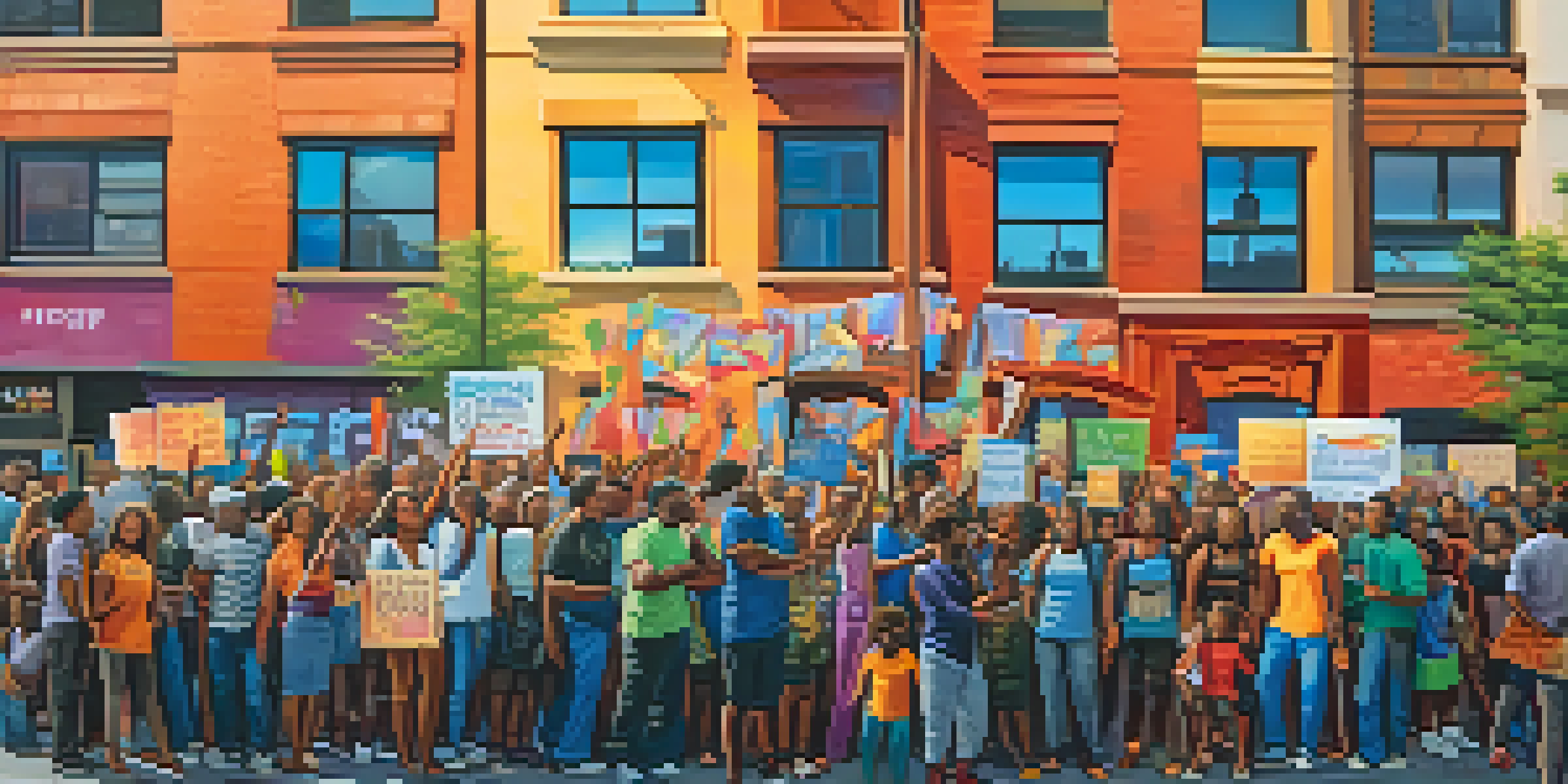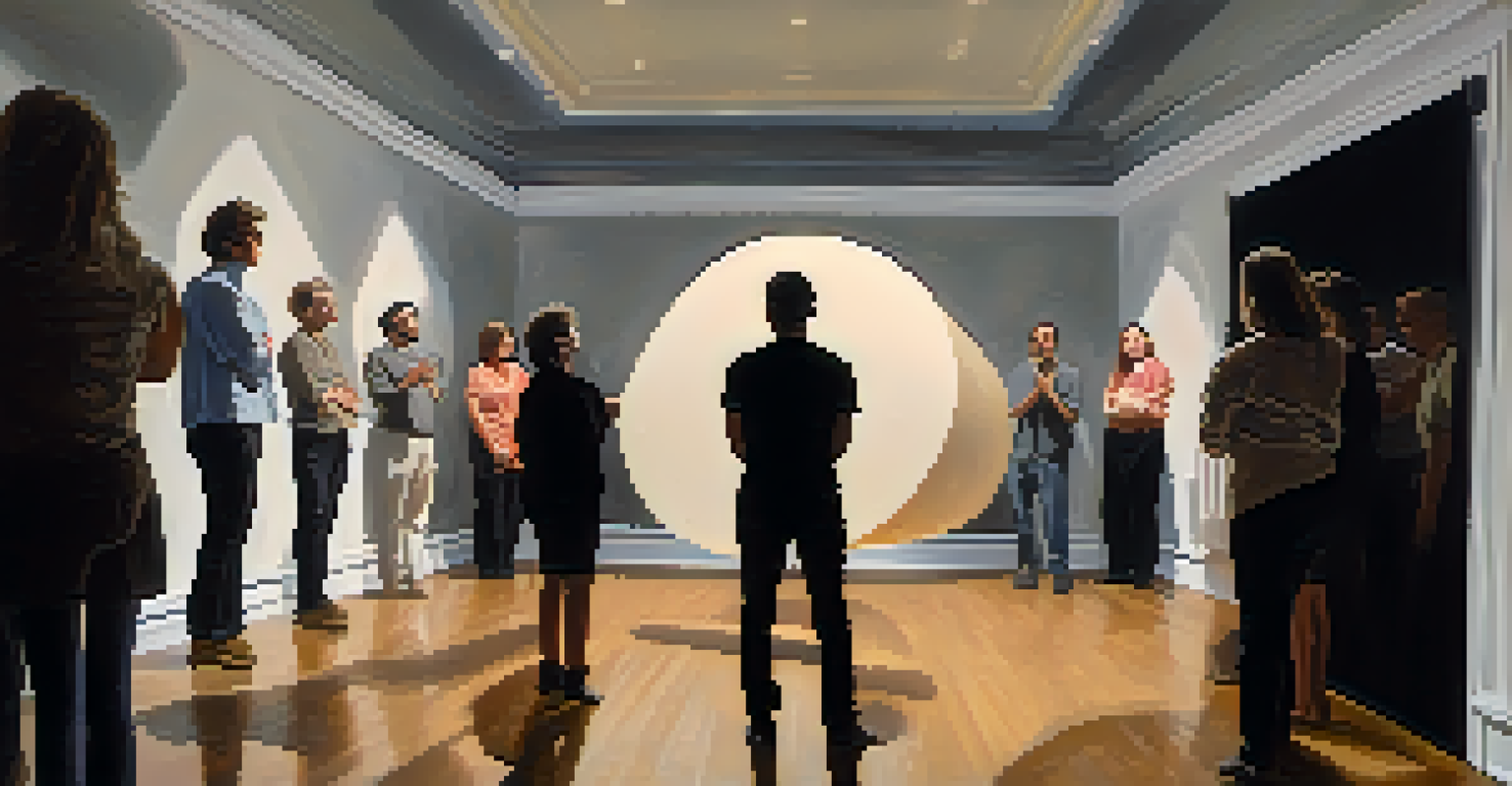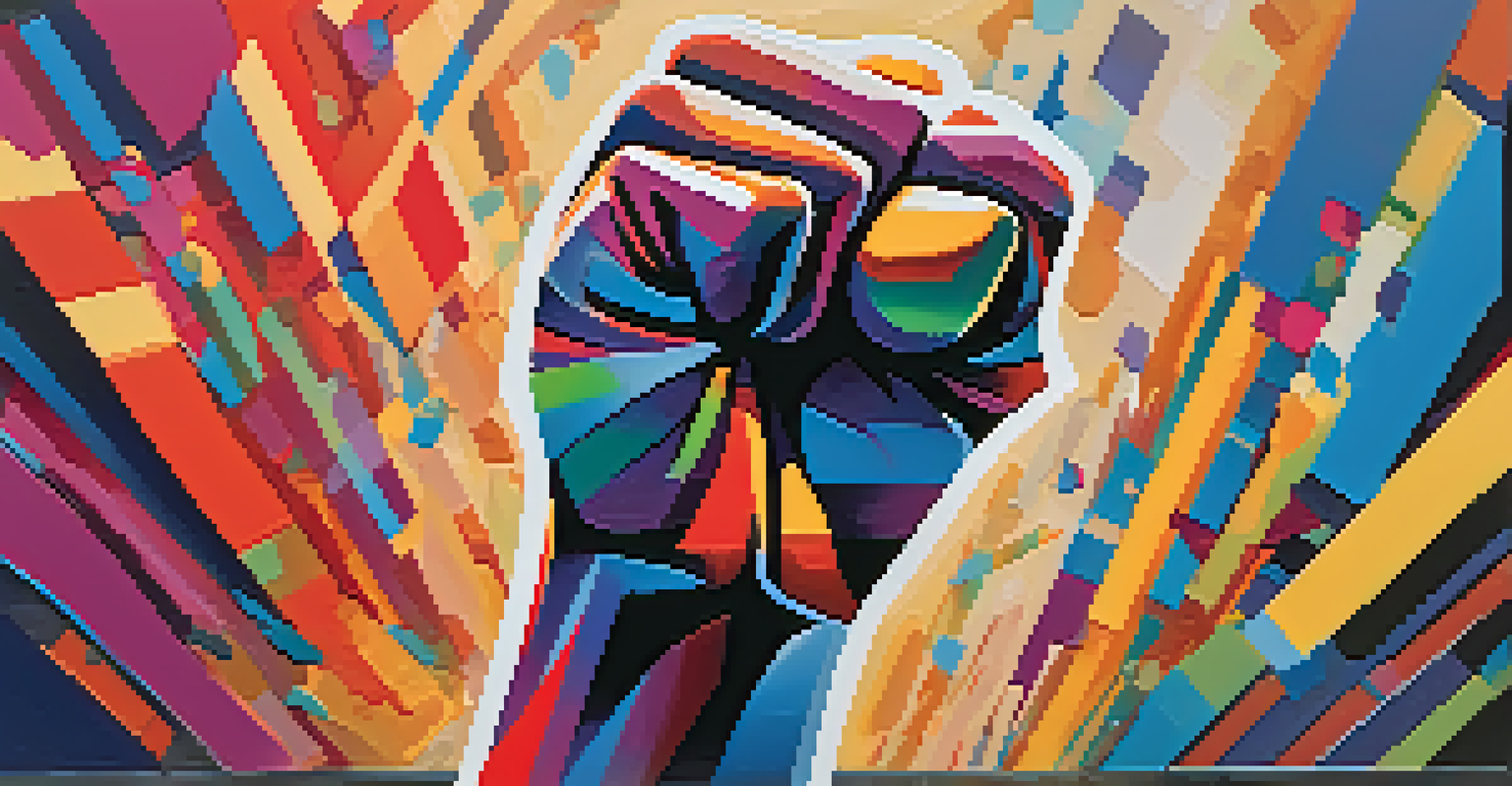Art in Protest: The History of Art as a Form of Resistance

The Roots of Artistic Protest in History
Art has always been intertwined with the social and political climates of its time. From the cave paintings that depicted hunting scenes to the murals of ancient civilizations, artistic expression often reflected the struggles of the people. This historical connection shows that artists have long used their work as a means of voicing dissent and advocating for change.
Art is not a mirror to hold up to society, but a hammer with which to shape it.
For example, the French Revolution inspired countless artists to create works that captured the spirit of rebellion. Paintings like Eugène Delacroix's 'Liberty Leading the People' not only showcased the fight for freedom but became symbols of the era. This historical precedent established art as a powerful tool for protest.
As we delve into the different forms art takes in resistance, it's crucial to recognize how this legacy continues to inspire modern movements. The essence of protesting through art has deep roots that shape its evolution.
Visual Art as a Tool for Social Change
Visual art has played a transformative role in social movements, often serving as a rallying cry for change. Artists have utilized various mediums, such as paintings, graffiti, and installations, to convey their messages powerfully. This creative expression can capture the emotions and urgency of a cause, resonating with audiences in profound ways.

Take, for instance, the work of street artists like Banksy, whose thought-provoking pieces challenge societal norms and draw attention to pressing issues like war and poverty. His art transcends language barriers and sparks conversations, making it a potent form of protest. Such examples highlight how visual art can inspire action and raise awareness.
Art as a Historical Protest Tool
Throughout history, art has served as an essential medium for expressing dissent and advocating for social change.
Moreover, the accessibility of visual art allows it to reach broader audiences. This democratization of art encourages participation in social movements, proving that creativity can be a unifying force in the fight for justice.
The Role of Music in Protest Movements
Music has a unique ability to evoke emotions and rally people together, making it an essential component of protest movements. Songs have been used throughout history to inspire hope, unity, and resistance against oppression. From folk songs during the Civil Rights Movement to punk anthems in the 1970s, music has served as a soundtrack for change.
The role of the artist is to make the revolution irresistible.
Artists like Bob Dylan and Joan Baez became iconic figures during the 1960s, using their music to address social issues and galvanize supporters. Their lyrics spoke to the struggles of their generation, providing a voice for the marginalized. This connection between music and activism showcases how melodies can resonate deeply and motivate collective action.
In contemporary times, musicians continue to use their platforms to address injustices. The rise of hip-hop as a form of protest music highlights the genre's role in discussing systemic racism and inequality, proving that the power of music in resistance is as relevant today as it has ever been.
Literature: A Voice for the Oppressed
Literature has historically been a powerful means of resistance, allowing writers to articulate dissent and challenge the status quo. Novels, poetry, and essays often serve as reflections of societal struggles, providing insight into the human experience under oppression. Through their words, authors can inspire empathy and provoke thought, making literature a formidable weapon against injustice.
Consider the works of authors like George Orwell and Maya Angelou, whose writings tackled themes of totalitarianism and racism, respectively. Their narratives not only expose harsh realities but also encourage readers to envision a better future. This ability to connect with audiences on an emotional level showcases the profound impact of literary protest.
Music's Role in Activism
Music has the unique ability to unite people and inspire action, making it a vital component of protest movements.
Moreover, literature often serves as a historical record, preserving the voices of those who fought for change. As we read these works, we not only gain understanding but also become part of a continuing dialogue about resistance and resilience.
The Impact of Performance Art in Protest
Performance art has emerged as a dynamic form of protest, turning the act of creation itself into a statement of resistance. By blending visual art, theater, and activism, artists can engage audiences in thought-provoking ways. This immersive experience often leaves a lasting impression, effectively communicating messages of dissent.
Take the works of artists like Marina Abramović, whose performances challenge viewers to confront uncomfortable truths about society. Her piece 'The Artist is Present' not only engaged participants but also sparked discussions about vulnerability and connection. Such performances illustrate how the body can be a powerful canvas for social commentary.
In recent years, performance art has been utilized in movements like Black Lives Matter, where artists create pieces that capture the urgency of these protests. By embodying the struggles of marginalized communities, performance art deepens the connection between the artist and the audience, making the message even more impactful.
Digital Art and Activism in the Modern Age
In our increasingly digital world, art has found new avenues for activism through technology. Social media platforms allow artists to share their work instantly, amplifying messages of protest to global audiences. This accessibility enables creativity to flourish in ways we could only imagine a few decades ago.
For example, digital artists often use graphic design to create compelling images that address social issues like climate change and racial injustice. Memes and illustrations can spread rapidly, making complex ideas digestible and engaging for younger generations. This form of activism not only raises awareness but also encourages dialogue.
Digital Art's Modern Impact
In today's digital age, art can be shared globally, allowing artists to engage audiences and foster activism through innovative platforms.
Furthermore, digital art allows for collaboration among artists worldwide, fostering a sense of solidarity in resistance. As we embrace these new mediums, it's clear that creativity continues to adapt and thrive in the face of adversity.
Case Studies: Iconic Art and Their Impact
Examining specific examples of iconic protest art can help us understand its profound impact on society. One notable case is Picasso's 'Guernica,' which powerfully depicts the horrors of war and the suffering it brings. Created in response to the bombing of a Spanish town during the Spanish Civil War, this painting became a universal symbol of anti-war sentiment.
Another powerful example is the 'I AM a Man' photo taken during the 1968 Memphis sanitation workers' strike, which captured the essence of the Civil Rights Movement. This simple yet profound image became a rallying cry for dignity and equality, showcasing the ability of imagery to encapsulate a moment in history.

These case studies remind us that art can transcend time and space, continuing to inspire future generations. By analyzing these works, we can appreciate how creativity has shaped and continues to shape social movements.
The Future of Art as Resistance
As we look ahead, the future of art as resistance remains vibrant and full of potential. With the rise of new technologies and platforms, artists have more tools than ever to express their dissent and advocate for change. This evolution means that the intersection of art and activism will continue to thrive in innovative ways.
Young artists are increasingly using their voices to address pressing issues such as climate justice, racial equality, and mental health. By harnessing the power of social media and digital art, they create movements that resonate with diverse audiences, urging them to take action. This new generation is not just passively consuming art; they are actively participating in its creation and dissemination.
Ultimately, the role of art in protest is not just about the past; it is about shaping the future. As we encourage creativity and support artists in their endeavors, we can foster a culture where art continues to be a powerful catalyst for change.